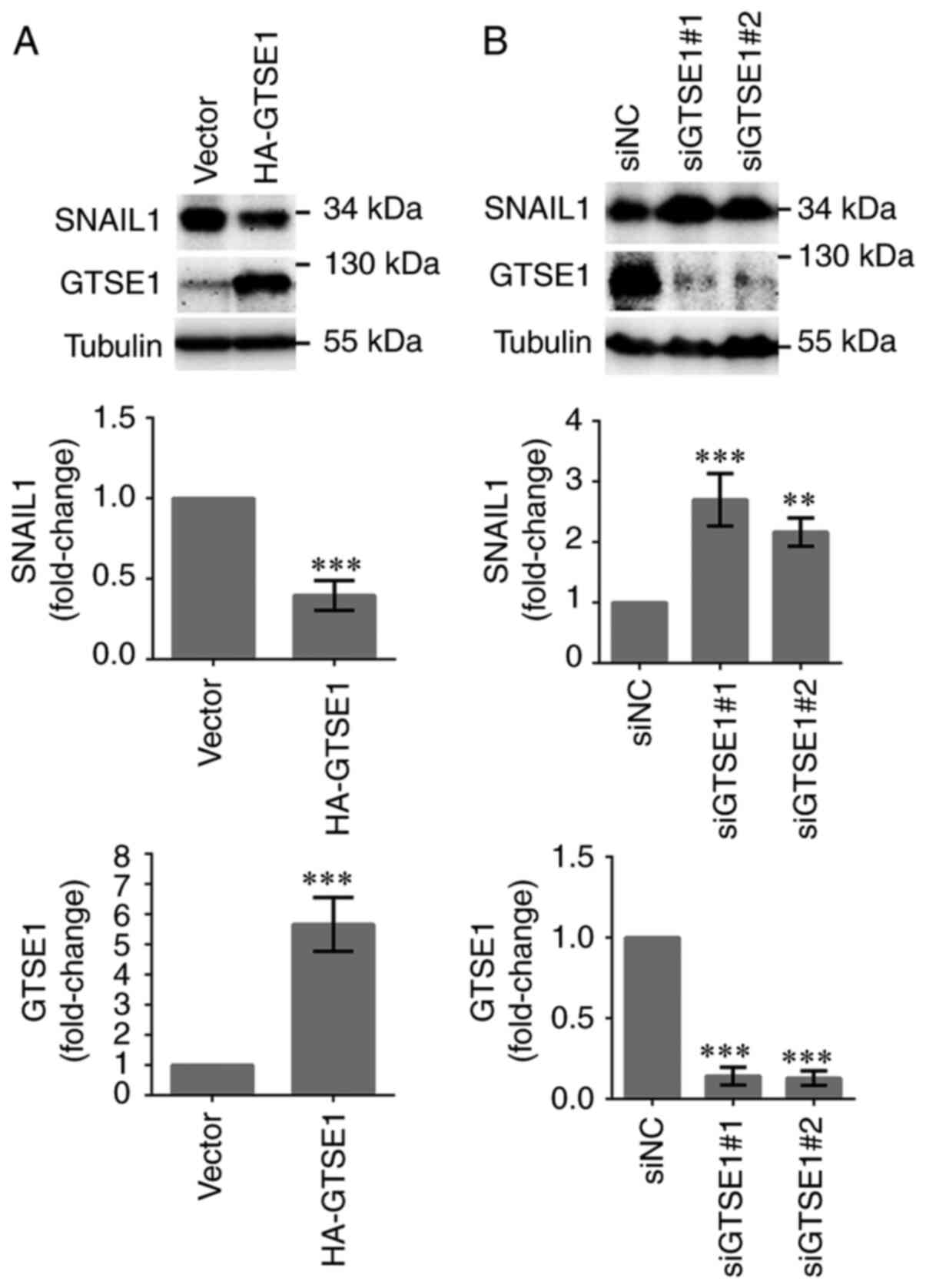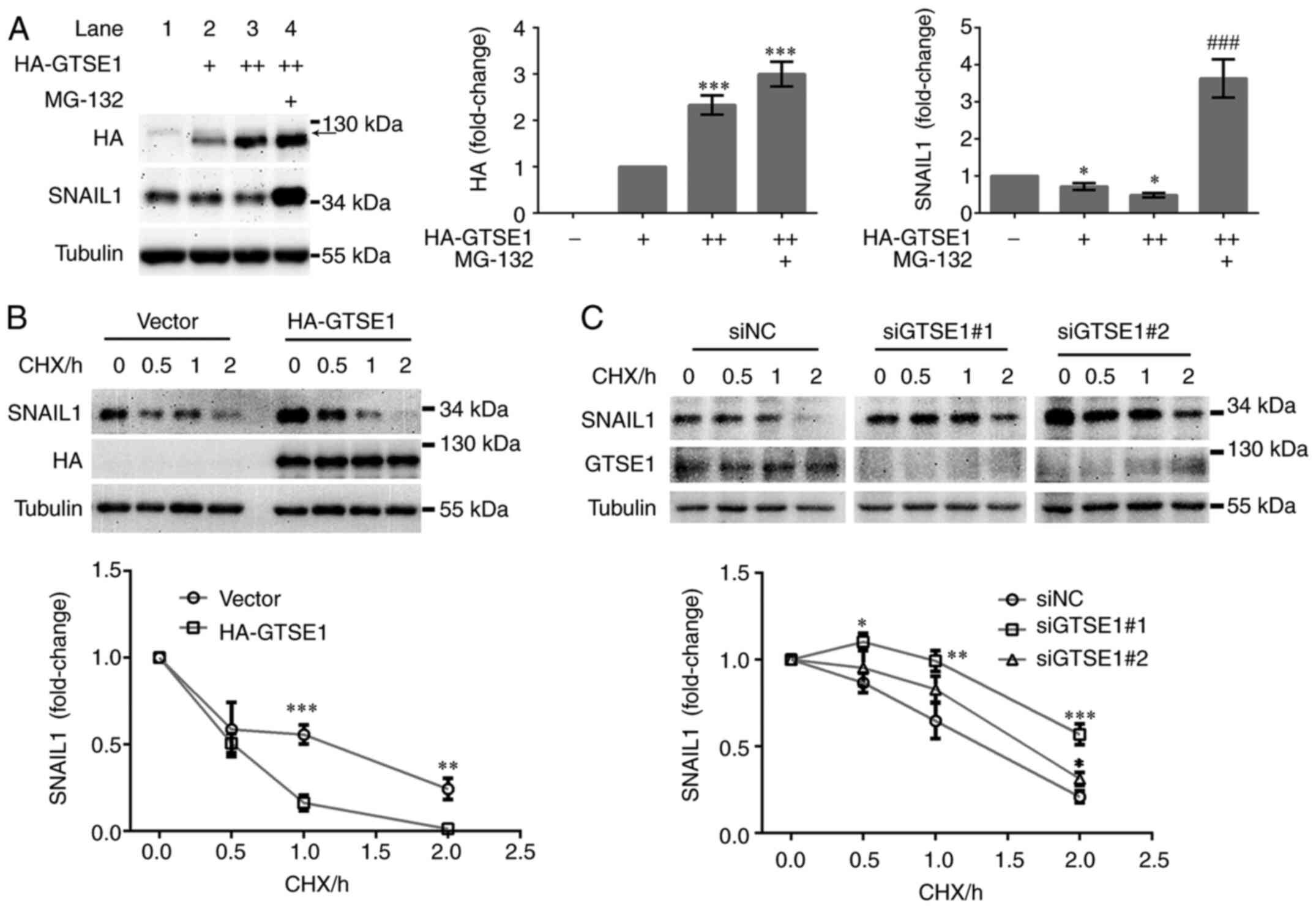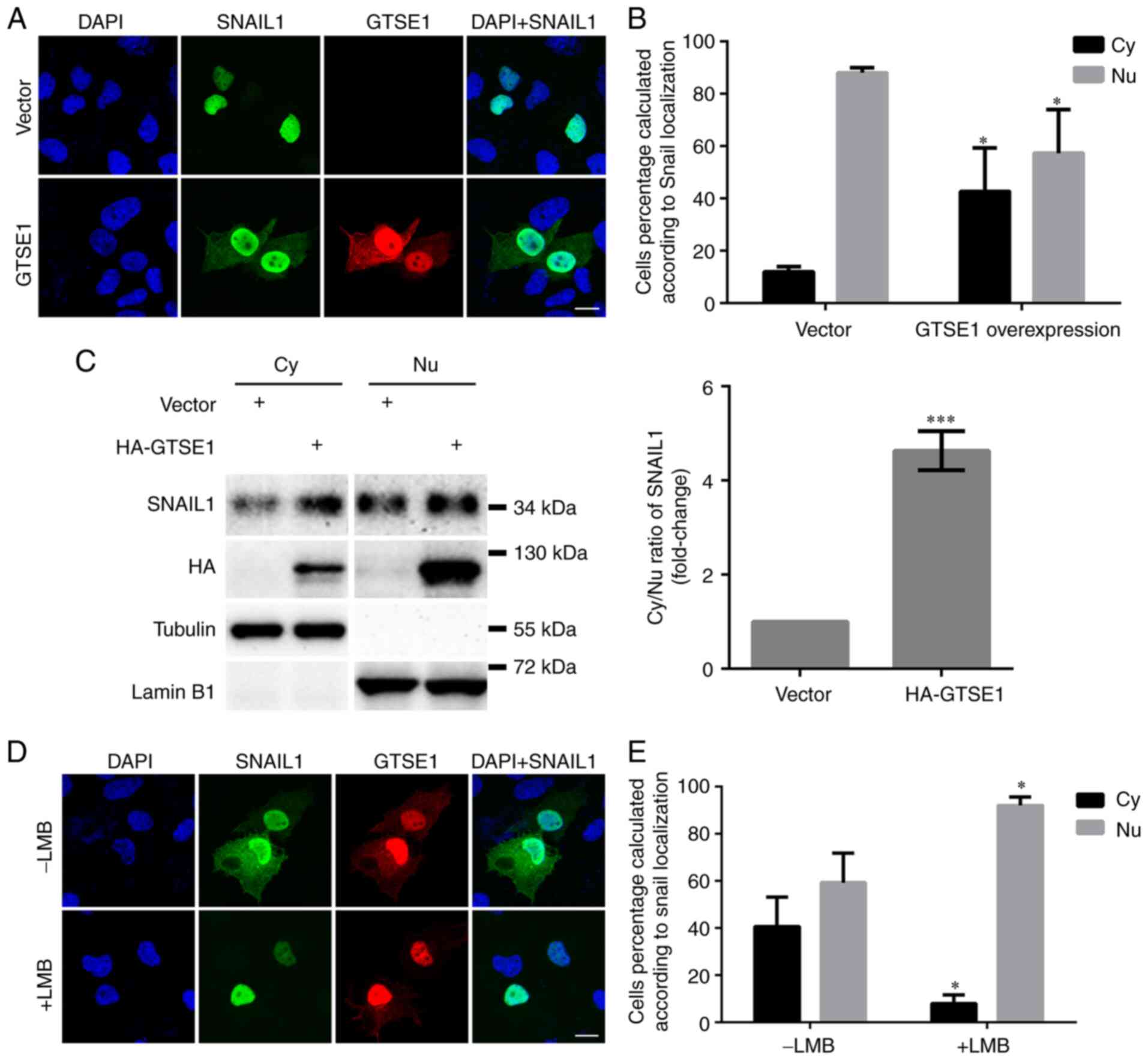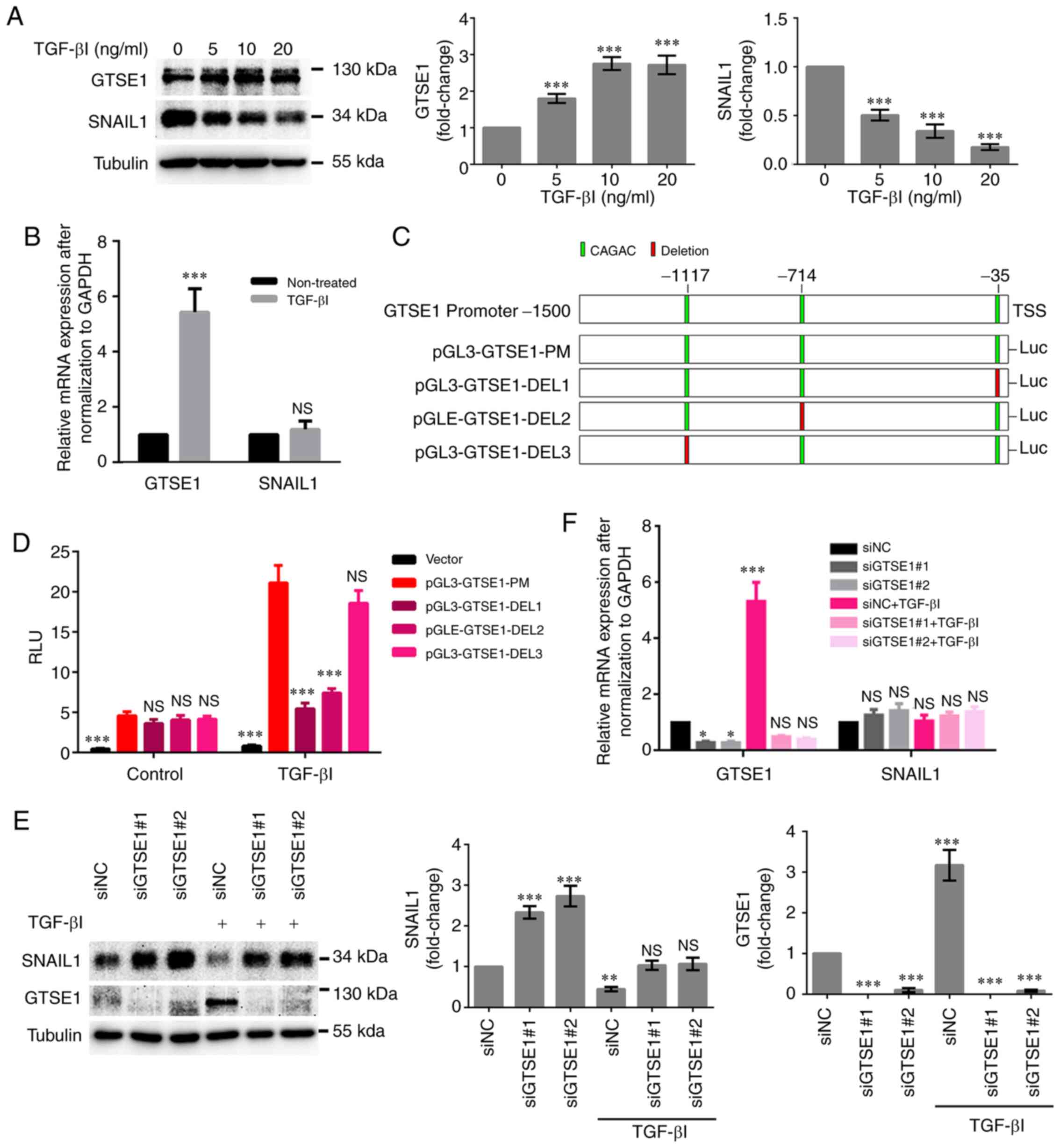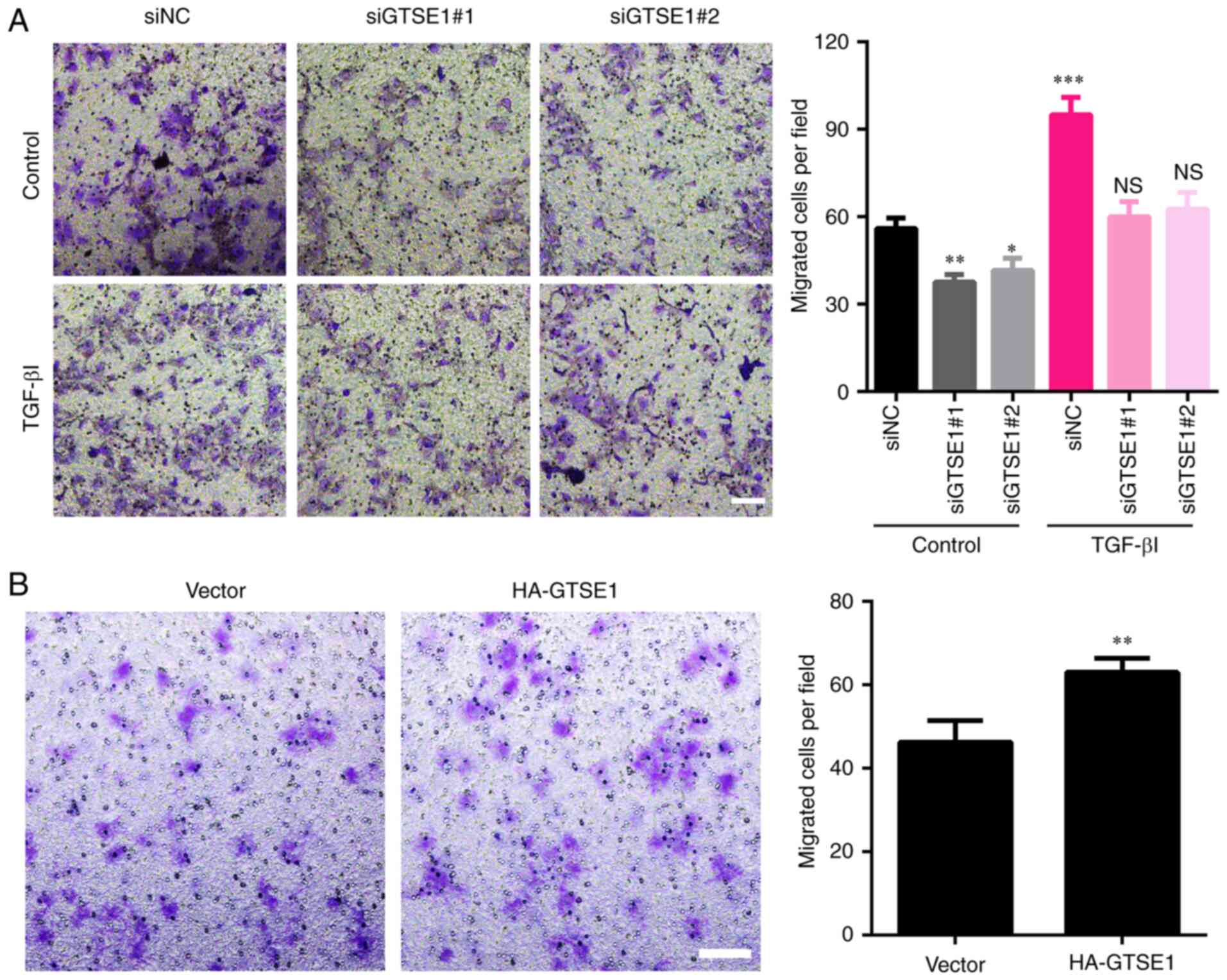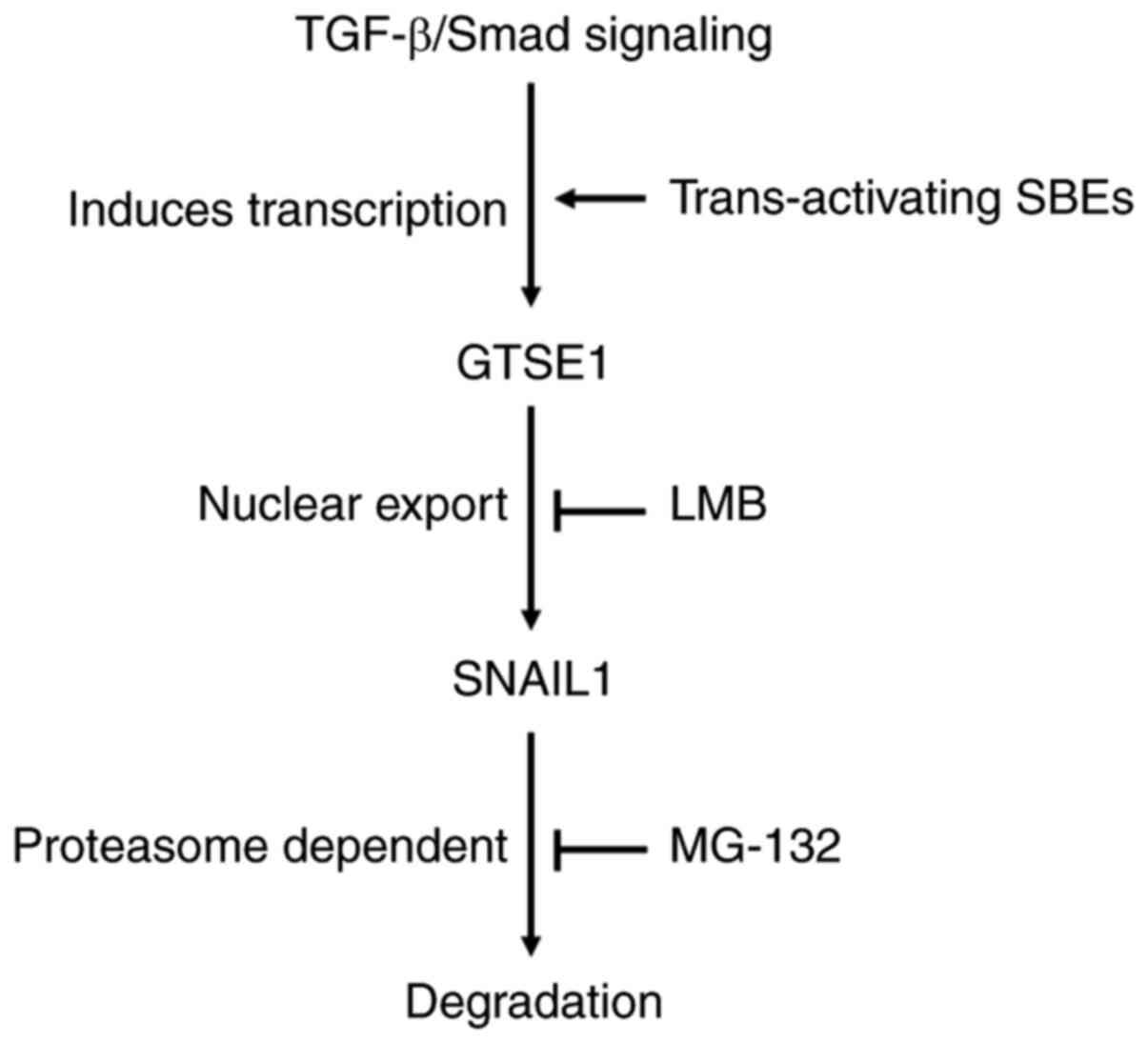|
1
|
Bray F, Ferlay J, Soerjomataram I, Siegel
RL, Torre LA and Jemal A: Global cancer statistics 2018: GLOBOCAN
estimates of incidence and mortality worldwide for 36 cancers in
185 countries. CA Cancer J Clin. 68:394–424. 2018. View Article : Google Scholar : PubMed/NCBI
|
|
2
|
Bruix J, Reig M and Sherman M:
Evidence-based diagnosis, staging, and treatment of patients with
hepatocellular carcinoma. Gastroenterology. 150:835–853. 2016.
View Article : Google Scholar : PubMed/NCBI
|
|
3
|
Forner A, Reig M and Bruix J:
Hepatocellular carcinoma. Lancet. 391:1301–1314. 2018. View Article : Google Scholar : PubMed/NCBI
|
|
4
|
Nieto MA: The snail superfamily of
zinc-finger transcription factors. Nat Rev Mol Cell Biol.
3:155–166. 2002. View
Article : Google Scholar : PubMed/NCBI
|
|
5
|
Domínguez D, Montserrat-Sentís B,
Virgós-Soler A, Guaita S, Grueso J, Porta M, Puig I, Baulida J,
Francí C and García de Herreros A: Phosphorylation regulates the
subcellular location and activity of the snail transcriptional
repressor. Mol Cell Biol. 23:5078–5089. 2003. View Article : Google Scholar
|
|
6
|
Wang Y, Shi J, Chai K, Ying X and Zhou BP:
The role of snail in EMT and tumorigenesis. Curr Cancer Drug
Targets. 13:963–972. 2013. View Article : Google Scholar : PubMed/NCBI
|
|
7
|
Kurrey NK, Jalgaonkar SP, Joglekar AV,
Ghanate AD, Chaskar PD, Doiphode RY and Bapat SA: Snail and slug
mediate radioresistance and chemoresistance by antagonizing
p53-mediated apoptosis and acquiring a stem-like phenotype in
ovarian cancer cells. Stem Cells. 27:2059–2068. 2009. View Article : Google Scholar : PubMed/NCBI
|
|
8
|
Moody SE, Perez D, Pan TC, Sarkisian CJ,
Portocarrero CP, Sterner CJ, Notorfrancesco KL, Cardiff RD and
Chodosh LA: The transcriptional repressor Snail promotes mammary
tumor recurrence. Cancer Cell. 8:197–209. 2005. View Article : Google Scholar : PubMed/NCBI
|
|
9
|
Vincent T, Neve EP, Johnson JR, Kukalev A,
Rojo F, Albanell J, Pietras K, Virtanen I, Philipson L, Leopold PL,
et al: A SNAIL1-SMAD3/4 transcriptional repressor complex promotes
TGF-beta mediated epithelial-mesenchymal transition. Nat Cell Biol.
11:943–950. 2009. View
Article : Google Scholar : PubMed/NCBI
|
|
10
|
Ruan HB, Nie Y and Yang X: Regulation of
protein degradation by O-GlcNAcylation: Crosstalk with
ubiquitination. Mol Cell Proteomics. 12:3489–3497. 2013. View Article : Google Scholar : PubMed/NCBI
|
|
11
|
Zhou BP, Deng J, Xia W, Xu J, Li YM,
Gunduz M and Hung MC: Dual regulation of Snail by
GSK-3beta-mediated phosphorylation in control of
epithelial-mesenchymal transition. Nat Cell Biol. 6:931–940. 2004.
View Article : Google Scholar : PubMed/NCBI
|
|
12
|
Muqbil I, Wu J, Aboukameel A, Mohammad RM
and Azmi AS: Snail nuclear transport: The gateways regulating
epithelial-to-mesenchymal transition? Semin Cancer Biol. 27:39–45.
2014. View Article : Google Scholar : PubMed/NCBI
|
|
13
|
Wu X, Wang H, Lian Y, Chen L, Gu L, Wang J
and Huang Y, Deng M, Gao Z and Huang Y: GTSE1 promotes cell
migration and invasion by regulating EMT in hepatocellular
carcinoma and is associated with poor prognosis. Sci Rep.
7:51292017. View Article : Google Scholar : PubMed/NCBI
|
|
14
|
Monte M, Benetti R, Collavin L, Marchionni
L, Del Sal G and Schneider C: hGTSE-1 expression stimulates
cytoplasmic localization of p53. J Biol Chem. 279:11744–11752.
2004. View Article : Google Scholar : PubMed/NCBI
|
|
15
|
Scolz M, Widlund PO, Piazza S, Bublik DR,
Reber S, Peche LY, Ciani Y, Hubner N, Isokane M, Monte M, et al:
GTSE1 is a microtubule plus-end tracking protein that regulates
EB1-dependent cell migration. PLoS One. 7:e512592012. View Article : Google Scholar : PubMed/NCBI
|
|
16
|
Subhash VV, Tan SH, Tan WL, Yeo MS, Xie C,
Wong FY, Kiat ZY, Lim R and Yong WP: GTSE1 expression represses
apoptotic signaling and confers cisplatin resistance in gastric
cancer cells. BMC Cancer. 15:5502015. View Article : Google Scholar : PubMed/NCBI
|
|
17
|
Lian YF, Huang YL, Zhang YJ, Chen DM, Wang
JL, Wei H, Bi YH, Jiang ZW, Li P, Chen MS, et al: CACYBP enhances
cytoplasmic retention of P27Kip1 to promote hepatocellular
carcinoma progression in the absence of RNF41 mediated degradation.
Theranostics. 9:8392–8408. 2019. View Article : Google Scholar : PubMed/NCBI
|
|
18
|
Livak KJ and Schmittgen TD: Analysis of
relative gene expression data using real-time quantitative PCR and
the 2(-Delta Delta C(T)) method. Methods. 25:402–408. 2001.
View Article : Google Scholar : PubMed/NCBI
|
|
19
|
Chen J, Ding ZY, Li S, Liu S, Xiao C, Li
Z, Zhang BX, Chen XP and Yang X: Targeting transforming growth
factor-β signaling for enhanced cancer chemotherapy. Theranostics.
11:1345–1363. 2021. View Article : Google Scholar : PubMed/NCBI
|
|
20
|
Martin-Malpartida P, Batet M, Kaczmarska
Z, Freier R, Gomes T, Aragón E, Zou Y, Wang Q, Xi Q, Ruiz L, et al:
Structural basis for genome wide recognition of 5-bp GC motifs by
SMAD transcription factors. Nat Commun. 8:20702017. View Article : Google Scholar : PubMed/NCBI
|
|
21
|
Yang Z, Rayala S, Nguyen D, Vadlamudi RK,
Chen S and Kumar R: Pak1 phosphorylation of snail, a master
regulator of epithelial-to-mesenchyme transition, modulates snail's
subcellular localization and functions. Cancer Res. 65:3179–3184.
2005. View Article : Google Scholar : PubMed/NCBI
|
|
22
|
Zhang K, Rodriguez-Aznar E, Yabuta N, Owen
RJ, Mingot JM, Nojima H, Nieto MA and Longmore GD: Lats2 kinase
potentiates Snail1 activity by promoting nuclear retention upon
phosphorylation. EMBO J. 31:29–43. 2012. View Article : Google Scholar : PubMed/NCBI
|
|
23
|
Monte M, Benetti R, Buscemi G, Sandy P,
Del Sal G and Schneider C: The cell cycle-regulated protein human
GTSE-1 controls DNA damage-induced apoptosis by affecting p53
function. J Biol Chem. 278:30356–30364. 2003. View Article : Google Scholar : PubMed/NCBI
|
|
24
|
Liu XS, Li H, Song B and Liu X: Polo-like
kinase 1 phosphorylation of G2 and S-phase-expressed 1 protein is
essential for p53 inactivation during G2 checkpoint recovery. EMBO
Rep. 11:626–632. 2010. View Article : Google Scholar : PubMed/NCBI
|
|
25
|
Bierie B and Moses HL: Tumour
microenvironment: TGFbeta: the molecular Jekyll and Hyde of cancer.
Nat Rev Cancer. 6:506–520. 2006. View Article : Google Scholar : PubMed/NCBI
|
|
26
|
Massagué J: TGFβ signalling in context.
Nat Rev Mol Cell Biol. 13:616–630. 2012. View Article : Google Scholar
|
|
27
|
Moon H, Ju HL, Chung SI, Cho KJ, Eun JW,
Nam SW, Han KH, Calvisi DF and Ro SW: Transforming growth factor-β
promotes liver tumorigenesis in mice via up-regulation of snail.
Gastroenterology. 153:1378–1391.e6. 2017. View Article : Google Scholar : PubMed/NCBI
|
|
28
|
Kawai T, Yasuchika K, Ishii T, Miyauchi Y,
Kojima H, Yamaoka R, Katayama H, Yoshitoshi EY, Ogiso S, Kita S, et
al: SOX9 is a novel cancer stem cell marker surrogated by
osteopontin in human hepatocellular carcinoma. Sci Rep.
6:304892016. View Article : Google Scholar : PubMed/NCBI
|















